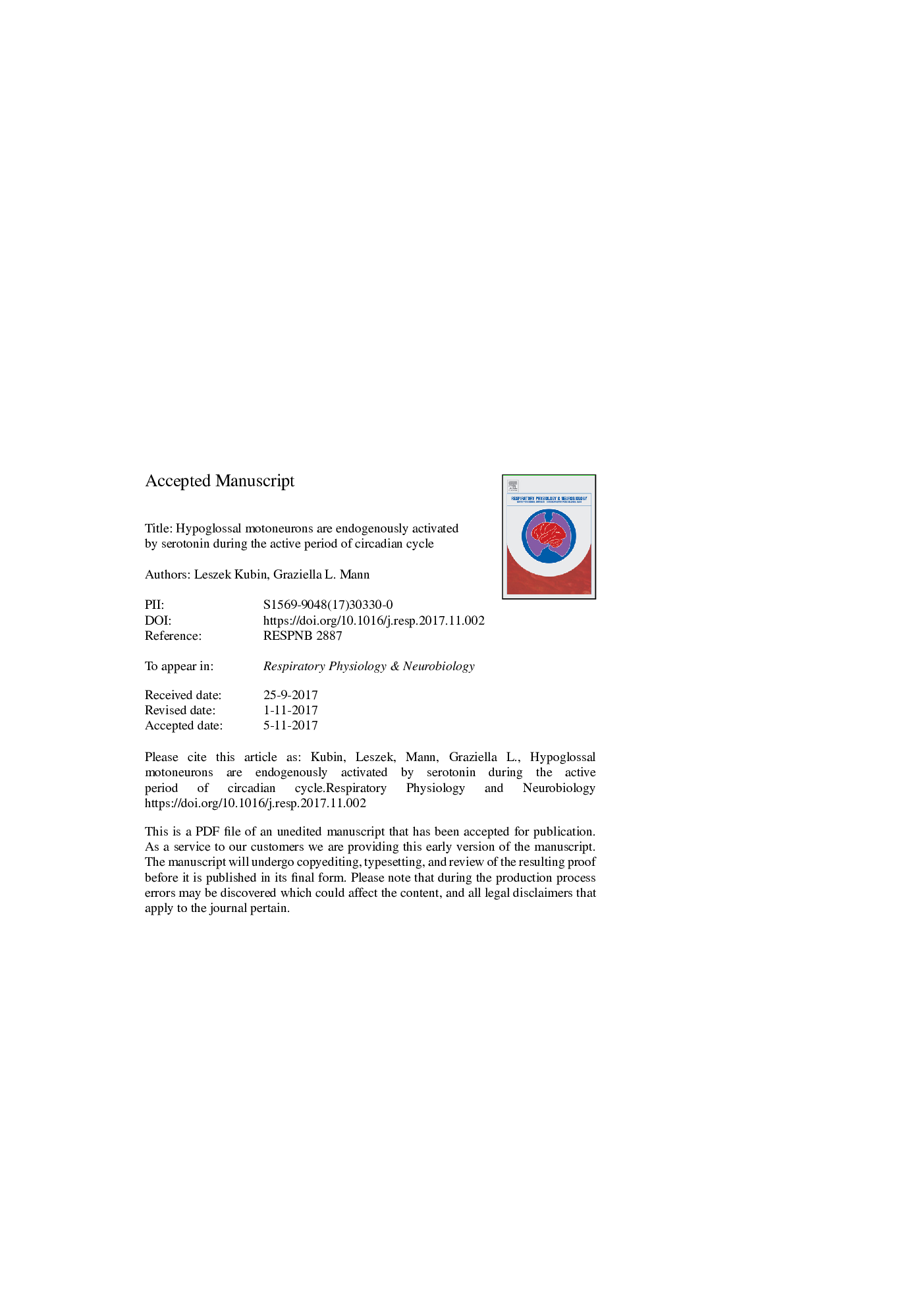| Article ID | Journal | Published Year | Pages | File Type |
|---|---|---|---|---|
| 8650841 | Respiratory Physiology & Neurobiology | 2018 | 34 Pages |
Abstract
In obstructive sleep apnea patients, contraction of lingual muscles protects the pharyngeal airway from collapse. Hypoglossal (XII) motoneurons innervate the muscles of the tongue and are themselves under wake-related excitatory drives, including that mediated by serotonin (5-HT). Estimates of endogenous 5-HT activation vary among different studies. We tested whether endogenous drive mediated by 5-HT is present in rat XII motoneurons when measured during the active period of the circadian cycle. We monitored sleep-wake states and lingual and nuchal electromyograms (EMGs) while perfusing the XII nucleus with a vehicle or a 5-HT2 receptor antagonist (mianserin, 0.2 mM) at the active period onset. EMG levels were measured during each behavioral state and normalized by the mean EMG activity during wakefulness at 4-7am. Wake-related lingual EMG was significantly lower during mianserin perfusion than with the vehicle (53.0 ± 9.7% vs. 84.5 ± 8.7%; p = 0.002). Mianserin had no effect on nuchal EMG or sleep-wake behavior. Thus, rat XII motoneurons receive endogenous serotonergic activation during wakefulness when measured during the dark period. This indicates that XII motoneuronal activity is enhanced by 5-HT output during the active period of the circadian cycle.
Related Topics
Life Sciences
Biochemistry, Genetics and Molecular Biology
Physiology
Authors
Leszek Kubin, Graziella L. Mann,
